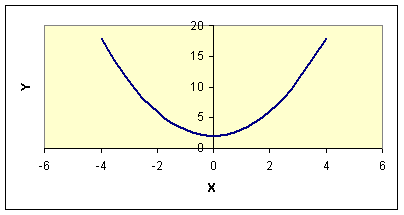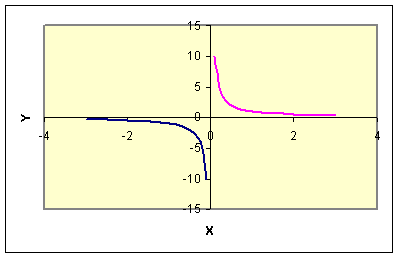SAO Maths Primer

SAO Maths Primer |
 |
Mathematics Primer: Limits
The limit of a function is simply what value the function approaches
as we approach (very closely) a specific input value. Limits can be
thought of as describing the very small scale behaviour of a
function.
Recall that a function is a relation that uniquely associates one set
of numbers with members of another set.
So, let us consider a function, f(x) . The limit is concerned with what f(x) looks like around the point x = a . The formal statement says that the limit L is the number such that if you take numbers arbitrarily close to a that the result of f applied to those numbers must be arbitrarily close to L .
The formal definition is given by the following statement:

The above equation can simply be expressed as follows " f(x) approaches L as x approaches a ".
Let's see some examples:
|
Example 1
This graphic shows the function y = x2+2
What is the limit of the function as x approaches 0?
This case is an easy one, obviously L=2 , which you can find just by substituting x=0 in the function. |
 |
But sometimes calculating limits is not that easy:
| Example 2 This graphic shows the function y=1/x . In this case you cannot find the limit as x approaches zero just by substituting x=0 into the function.
|
 |
|
Then in this case we say that the limit of the function as x approaches 0 through positive values is +infinity, and the limit of the function as x approaches 0 through negative values is -infinity. What about the limit of the function when x takes very large values (i.e. when x approaches infinity)? Following a similar procedure you can see that as x tends to infinity (either through positive or negative numbers) the function y tends to zero. |
See also: function
Eric Weisstein's world of Mathematics mathworld.wolfram.com
S.O.S. Mathematics www.sosmath.com
Return to Maths Primer page
Back to the Swinburne Astronomy Online Home Page
©
Swinburne
Copyright and disclaimer information
Maintained by: Rebecca Allen
(rebeccaallen@swin.edu.au)
Authorised by: Prof. Jean Brodie (jbrodie@swin.edu.au)
Monday, 19-Nov-2007 11:19:37 AEDT